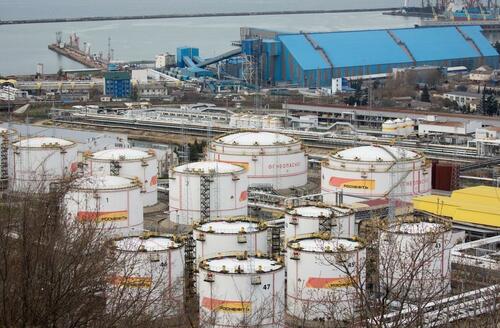World’s Largest Oil Trader Warns Energy Markets Are Under-Pricing Supply Risks
Thanks to a lucky confluence of circumstances, President Joe Biden has so far been able to delude the American people into believing that his latest feeble attempt to drive energy prices lower (without abandoning the green agenda that has led to structural deficiencies in the American oil and gas industry that will require concentrated investment over time to correct) has actually helped to drive prices lower at the pump.
Unfortunately for him, a growing chorus of energy-market analysts are warning the public that the SPR release is essentially a band-aid on a bullet wound. Just the other day, Goldman Sachs warned that the unprecedented SPR release of 180 mb over the next six months to fight the “Putin price hike at the pump” has, in reality, done nothing to resolve structural issues, prompting the bank’s energy analysts to raise their near-term forecast for 2H22 Brent to $115/bbl from $110/bbl.
Fresh off making a record $4 billion profit in 2021 (per Reuters), analysts at Vitol, the world’s largest energy trader, are warning of more imminent upside ahead in oil prices.
Their reasoning? Lockdowns in Shanghai and Washington’s efforts to lead a ‘Marshall plan for energy’ to try and wean Europe off their dependence on Russian oil doesn’t change the fact that flows of Russian crude and oil products may be down by between 1 and 3 million barrels a day through the third quarter, while OPEC+ has refused to bolster its output.
“Oil feels cheaper than most would’ve predicted,” Mike Muller, Vitol Group’s head of Asia, said Sunday on a podcast produced by Dubai-based consultant and publisher Gulf Intelligence. “Oil prices could be higher given the risk of disruption of supplies from Russia. But people are still lost figuring out those numbers.”
Other factors that have weighed on energy prices this past month include (according to Bloomberg)…
The Lockdown in Shanghai
Muller suspects the CCP will double down on its repressive strategy for quashing the latest COVID outbreak, even as locals become increasingly outraged and accuse the Party of violating its compact with the Chinese public, as the NYT recently pointed out.
“I happen to be in the camp that thinks China will continue to suppress this,” Muller said. “The Chinese are certainly making a good fist of arresting it.”
Beijing will probably announce more economic stimulus measures before the Communist Party Congress later this year, Muller said. Such a move would likely bolster demand for oil in the world’s biggest importer.
“China will throw the kitchen sink at making sure the economy delivers,” he said. “We are going to see China put a massive effort into infrastructure spending and propping up the economy. You’re going to see a big outlay.”
The Iran Deal
Another bullish risk factor for oil prices is the unraveling talks with Iran about reviving the JCPOA. Muller believes the market is overestimating the odds of a deal, noting that vast differences in the two sides’ negotiating positions remains.
American officials said late last month that a pact wasn’t “imminent,” while Iran has made similar comments. Envoys are yet to say when they’ll return to Vienna for negotiations and many U.S. allies in the Middle East – including Israel and Saudi Arabia – are wary that a revival of the deal would hand Iran an oil windfall and allow it to continue arming proxy groups in the region.
“Everyone was expecting a return of Iranian supplies,” Muller said. Now “nobody believes that’s going to happen in the second quarter. It looks much less likely than it did a few weeks back.”
Of course, commodity traders like Vitol have plenty of incentive to brace for higher energy prices. As we pointed out last month, many commodity traders have just endured a brutal series of market ructions that some likened to a “doom loop”.
In fact, just last month, the CFO of Vitol rival and commodity trading giant Trafigura predicted that that chaotic moves in global energy and commodity markets would likely trigger a wave of “consolidation” as smaller players are driven into insolvency.
With this in mind, it’s worth asking: how much longer until the “doom loop” is finally triggered and the price of energy (and other commodities) surges to levels beyond the forecasts of even the most bullish investment banks/commodity traders?
Tyler Durden
Sun, 04/03/2022 – 18:05
via ZeroHedge News https://ift.tt/Kc3ePnF Tyler Durden
